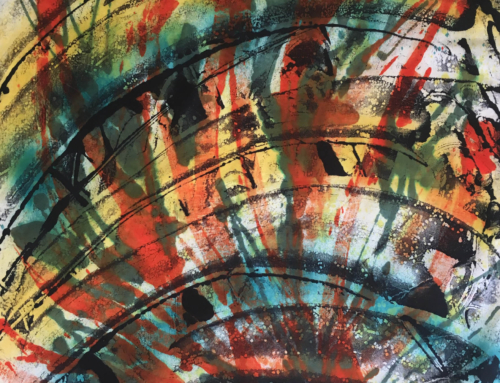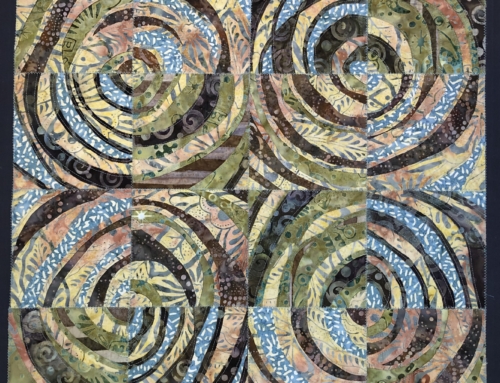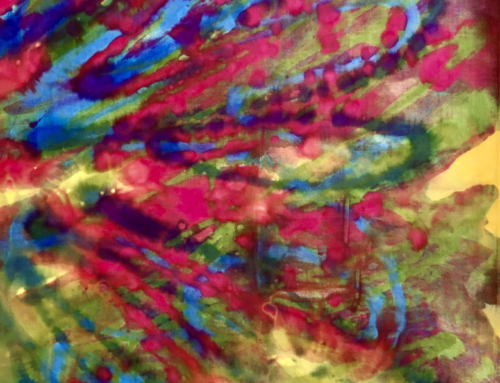In art (as in life), I tend to be a “What-The-Heck, Throw-The-Kitchen-Sink-At-It” Girl. The epitaph on my urn will probably read, ”Why not? What’s the worst that could happen?”
When it comes to sensory experiences, I gravitate to heavily-planted gardens, spicy food, music with layers of vocal harmonies and soulful lyrics, and visual art filled frame-to-frame with bold color, shapes and textures. One of my friends refers to me as “She-Who-Colors-Real-Hard.” I do love intense color; in short, greige does not figure prominently in my color palette just as bland has no place in my stockpot.
And so, it came as a surprise when in a recent print-making class, the instructor issued this challenge: “Leave some white space.”
Wait, what? White space? Isn’t that just empty space on a canvas waiting to be filled? Won’t blank spaces result in expressionless compositions…lackluster, lazy – and worst of all – boring?
I assumed that the point of making art was to fill a space, experiment with new ideas and create compositions teeming with movement, rhythm and color. As an artist, my work is to fill the space (not leave it blank.) Right?
Hmmm. After a deep breath…and another, I considered the instructor’s challenge and thought-provoking questions, mulling them over like putty in my hand. After writing numerous journal entries on the subject and allowing the notion to sink in for a month, or two, or six…I decided to take up the challenge of leaving some space.
And then, on its own terms, the inevitable aha moment arrived: What is left out is as significant to the outcome as what remains! The Portuguese actually have a word for it. Saudade. There is no English equivalent, but the closest translation is this powerful, awe-inspiring concept: ‘The Presence of Absence.’
Digging deeper, I discovered a journal article by musician, writer, educator Cedric van Eenoo. In the abstract, van Eenoo suggests,
“A painting, a musical piece, a text and a film have in common an arrangement of distinct elements organized to produce the work and to generate meaning. However, when the focus diverts from what is perceptible in the composition to what is implied, a new dimension can emerge. By concentrating on what is missing, the mind has a different perception of the art…The work can operate on a new level of awareness, where the attributes that are actually absent become quintessential.”
After initial resistance to the challenge, I now experiment with white space as an artistic tool and a compositional subject. I have yet to fully grasp how this shift in focus may become an attribute in my work, having discovered that holding back on the surface is much more difficult than it may appear.
Choosing what to leave in and what to leave out reveals a powerful truth master artists and poets have known all along: Saudade — the presence of absence — is not nothing, but the potential for everything. It is a concept that I have come to deeply appreciate, a form of artistic expression that I hope becomes increasingly evident in and through my work.
Check out Cedric van Eenoo’s complete journal entry entitled “The In-Between” here: https://iafor.org/journal/iafor-journal-of-arts-and-humanities/volume-5-issue-1/article-7/





